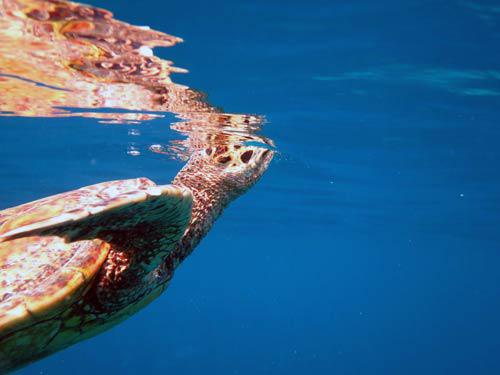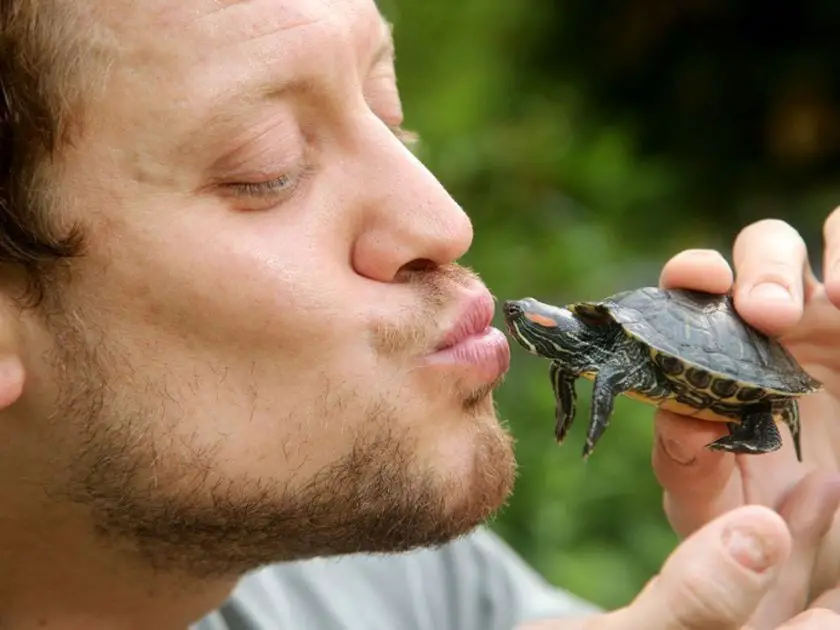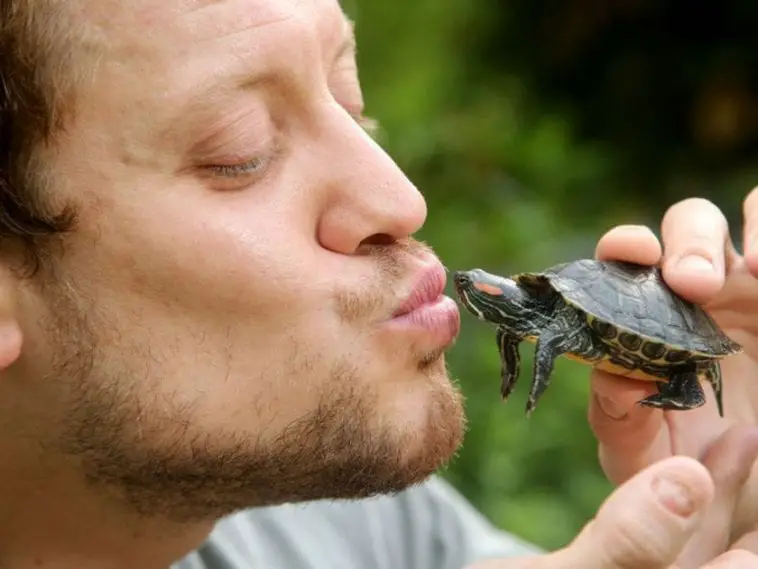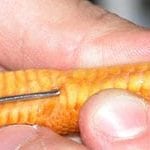Sea turtles are known for being one of the world’s most ancient species of vertebrates. When they are on land, these creatures appear to be a little awkward, as their front flippers struggle to pull their weight and crawl across the ocean shores. But, once they are submerged in the water, by which they spend most of their lives, sea turtles are as graceful as birds soaring in the sky. The front flippers of these sea-turtles now act like wings, and their heavy bodies cut through the waters like torpedoes.
Despite centuries of existence, sea turtles are still one big mystery to nature, and scientists are still spending hours of their lives to discover the secrets of these creatures’ lives.
How Do Sea Turtles Breathe?

Sea turtles, also known as marine turtles, are reptiles in the superfamily Chelonioidea, order Testudines, and suborder Cryptodira. They are air-breathing turtles that have lungs, so they can regularly come to the surface to breathe. As these turtles spend most of their time submerged underwater, they must be equipped to hold their breath for long periods.
The duration of each dive depends mainly on the turtle’s activity. If a sea turtle is foraging, it may spend about 5 to 40 minutes under the water. But if a turtle is sleeping, it can remain submerged underwater for 4 to 7 hours.
It is important to remark that sea turtle respiration remains aerobic, or at the cellular level, as long for a large majority of the time. But, if the turtle is forcibly submerged water, like when it is caught in a net and entangled within, the endurance of the turtle is deeply damaged and reduced, meaning it will be much more susceptible to drowning.
When the turtle resurfaces to breathe, the sea turtle will quickly refill its lungs in just a single explosive exhalation and through rapid inhalation. Their lungs open up to allow the quick exchange of oxygen and to avoid trapping gases during their deep dives.
Why Do Sea Turtles Drown?

Turtles are not fish, which means that they do not have gills to help them breathe underwater. Just like humans, they depend on the air for them to breathe. This means that turtles cannot spend 24 hours of a day submerged underwater. They have to come up every once in awhile, or else they will drown.
The ease by which a turtle can drown depends on different factors. In spite of sea turtles being able to spend 99 percent of their lives underwater, they can occasionally drown. The main reason is simple but quite disappointing: it involves humans.
Because of human fishing nets, sea turtles can get caught, tire their own selves out from trying to escape, and eventually drown. Unfortunately, the frequency of the matter is increasing, and it happens from time to time. Aside from fishing nets, turtles can get trapped within rocks and other materials underwater.
Can You Revive A Drowned Turtle?
Resuscitating drowned turtles can still be possible. The turtles can have a fighting chance if you take them to your trusted vet as soon as you can, no matter what. Remember the important cardinal rule that you must never break: Never ever turn a drowned turtle that is already on its back. You should not try to do something like breathe air into your turtle’s mouth because the misplaced air can damage your snake’s internal organs.
If you attempt to breathe air into the lungs of your turtle, you might a mistake that might force out the remaining air out of the body of your turtle.
Remember, the first thing that you must do is to stay calm. Turtles do not have the same body type as humans. If a person can become lifeless within minutes of losing air, you have a bit of a leeway when you are with humans. This is because turtles do not need as much oxygen as humans do in order to gain their bodily functions.
How Can You Revive A Drowned Turtle?

Here are some common tips that you can consider to help with dealing with a drowned sea turtle:
- Take your pet turtle out of the water and hold it vertically so that its head is pointed downwards.
- Very gently, grab the turtle’s head right behind its ears and pull the neck of your turtle out until you have extended it. Most probably, you will be able to see water leaking out of your turtle’s mouth.
- Next, place your turtle on a stable and dry surface in an upright position, meaning not on your turtle’s back.
- Grab the front legs of your turtle and pull the legs gently until the legs are fully extended. Then, push the legs again inside and watch as the water drip out of your turtle’s mouth.
- Repeat the same process to your turtle’s hind legs this time.
- Alternate pulling and pushing the legs of your turtle until you find that no more water drips out of the sea turtle’s mouth.
- If you can see signs of life from your turtle, like small movements, take your turtle the veterinarian as soon as possible.
- If the turtle is still not showing any type of life signs, there is one thing that you can try. Place your turtle gently in your palm and grab the side of its head gently. Then, swing its arm from side to side so that all the remaining can get thrown out of your turtle’s insides.
- No matter what happens, even if you get to revive your turtle, bring it your trusted veterinarian for a better strength assessment.
Other Things To Note About Sea Turtle Longevity & Causes of Death
Once your sea turtles reach their sexual maturity, the estimated reproductive life of these turtles is about 30 years. Green sea turtles are the latest among subspecies, to mature, and their reproductive life is estimated to be about 19 years. Their total lifespan is estimated to be about 60 years and more.
Their usual causes of deaths are:
- Natural Predators – The sea turtles usually deal with sharks, particularly tiger sharks. Additionally, killer whales are also known to prey on leatherback turtles. For sea turtle hatchlings and eggs, their predators are usually dogs, fishes, ghost crabs, seabirds, raccoons, and other similar predators. For flatback turtles, their nests are also susceptible to predation by animals like dingoes, foxes, and monitor lizards.
- Fibropapillomas – Another significant cause of death for sea turtles are wart-like tumors that appear on their internal organs and their skin. These growths can lead to reducing vision, obstructing their swimming capabilities, and increasing their susceptibility to getting parasitism and other forms of infection. These problems are very common in green turtles in Hawaiian waters. This problem may be partially caused by ocean pollutants, and a cure for this problem does not exist.
- Natural Disasters – Hurricanes can damage sea turtles and the success of their nesting and breeding situation. The fact that about 90 percent of sea turtle nesting in the continent occurs of beaches. Additionally, scientists estimate that more than half of the sea turtles that can be found on the shores of Florida got washed away, but the recent hurricanes that hit the coast. Another natural disaster to take note is that when the water turns cold, the coastal waters drop to 10 degrees Celsius, and the turtles can become cold-stunned, meaning floating at the surface and being unable to swim.
- Human Impact – Humans have done several bad things that can be very harmful to sea turtles.
- Some people illegally collect turtle eggs for food and for the believed aphrodisiac effect.
- Urban development programs like buildings, sea walls, rock jetties, and beach nourishment can reduce the available nesting beaches for sea turtles.
- Hatchlings can become disoriented by the lights during the evenings. This means they can mistakenly head away from oceans and head toward parking lots. They can get crushed by cars or eat some trash.
- Thousands of sea turtles get injured through exposure to commercial shrimp or fishing nets every year.
- Sea turtles also get caught in bycatch through longline fisheries. This includes gill nets, as well. Sometimes, sea turtles can also get caught as bycatch in longline fisheries.
- Sea turtles can also get injured by circle hooks and J-shaped hooks, which can lead to injuries and mortality.
- Ghost nets, discarded fishing gear, lobster trap lines, and other lost items can also entangle sea turtles.
- Deforestation can also threaten the lives of the sea turtle’s nests.
- Sea turtles can also be harmed by collision injuries and propeller injuries. This is a common accident in locations where there can is recreational boating.
- Some turtles die when they ingest trash, most especially balloons, plastic bags, and plastic pellets. They often mistake plastics as jellyfish prey.
Sea turtles are great creatures, and they deserve so much care. What people should consider is how to protect them and the environment that they live in for the years to come.



